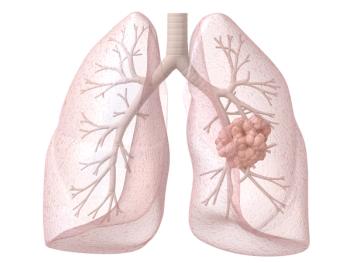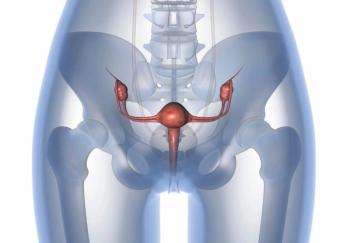
- Oncology Vol 29 No 4_Suppl_1
- Volume 29
- Issue 4_Suppl_1
(P098) Dosimetric Predictors of Pulmonary Toxicity in Patients With Malignant Pleural Mesothelioma Receiving Radiation Therapy to the Intact Lungs
Sparing the ipsilateral lung of at least a finite functional unit per 1 L of the ipsilateral lung is a predictor of the development of radiation pneumonitis. This represents a new dosimetric measure in plan evaluation and correlates significantly with the development of toxicity in patients with malignant pleural mesothelioma receiving radiation to the ipsilateral lung. This factor might be a more effective and useful parameter in these challenging cases.
Yaseen Zia, MD, Vishruta Dumane, PhD, Kenneth Rosenzweig; Icahn School of Medicine at Mount Sinai
INTRODUCTION: Pleurectomy and decortication is gaining wider acceptance as a standard surgery for malignant pleural mesothelioma. Adjuvant radiation is particularly challenging, due to the need to treat the pleura while sparing the underlying intact lung. Typical dosimetric constraints are of limited value in this patient population. This study aimed to establish whether there was a functional subunit of lung that needed to be spared that was predictive of development of radiation pneumonitis in patients with malignant pleural mesothelioma receiving radiation therapy to the intact lungs.
MATERIALS AND METHODS: A total of 18 patients with malignant pleural mesothelioma (MPM) were treated with definitive or adjuvant hemithoracic pleural intensity-modulated radiation therapy (IMRT) after radical pleurectomy and decortification between 2010 and 2014. The dose was prescribed to the planning target volume (PTV), which included the entire parietal and visceral pleura, with a median dose of 4,500 cGy (range: 3,000–5,940 cGy). Specific dosimetric parameters pertaining to both lungs were recorded. Toxicity was assessed during weekly on-treatment visits and in follow-up examinations using Common Terminology Criteria for Adverse Events version 4.0 (CTCAE v4.0) criteria.
RESULTS: The median follow-up was 4 months (range: 1–18 mo). Six patients (33%) developed grade 3 pneumonitis or higher, and 12 patients (67%) did not. Mean lung dose and V30 of the total lungs were found to be statistically significant for the development of pneumonitis. Contralateral lung V5 and mean lung dose were found not to correlate with the development of pneumonitis, in contrast to previously published reports. We found that for each 1,000 cc of ipsilateral lung, if 150 cc was treated to less than 20 Gy, there was significantly less pneumonitis. No patients with 150 cc spared per 1,000 cc of normal lung developed pneumonitis vs 43% (6 of 14) of patients who failed to reach that threshold (P < .05).
CONCLUSIONS: Sparing the ipsilateral lung of at least a finite functional unit per 1 L of the ipsilateral lung is a predictor of the development of radiation pneumonitis. This represents a new dosimetric measure in plan evaluation and correlates significantly with the development of toxicity in patients with malignant pleural mesothelioma receiving radiation to the ipsilateral lung. This factor might be a more effective and useful parameter in these challenging cases.
Proceedings of the 97th Annual Meeting of the American Radium Society -
Articles in this issue
Newsletter
Stay up to date on recent advances in the multidisciplinary approach to cancer.


















































































